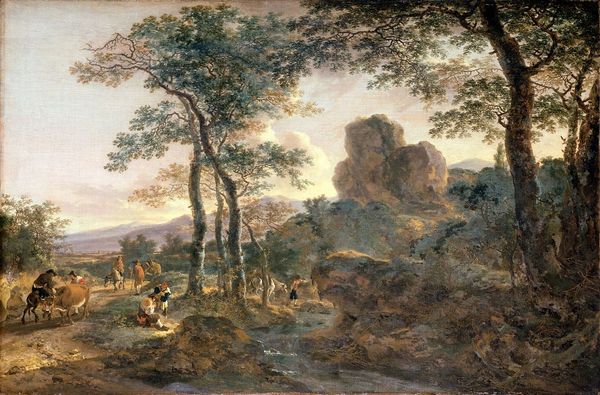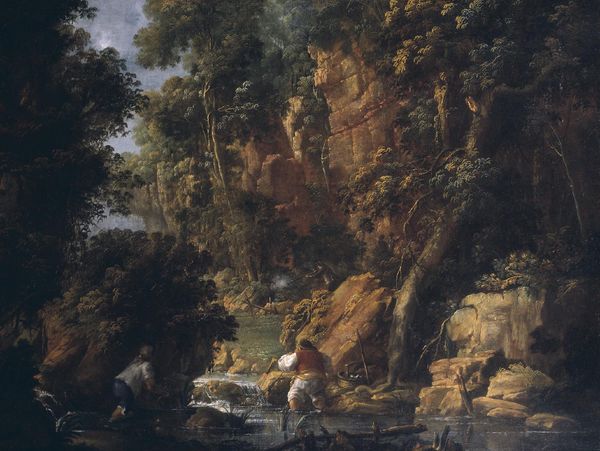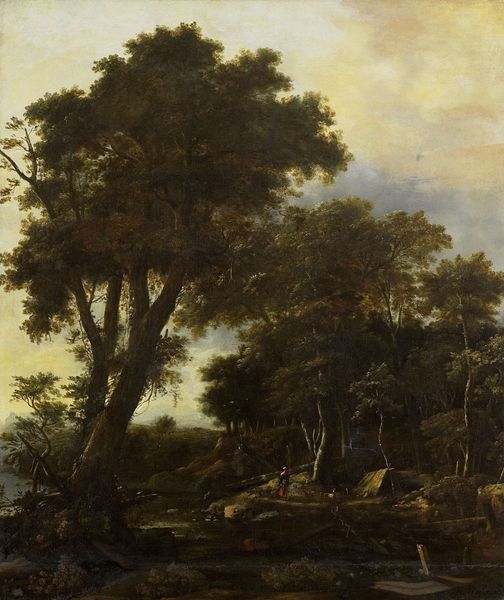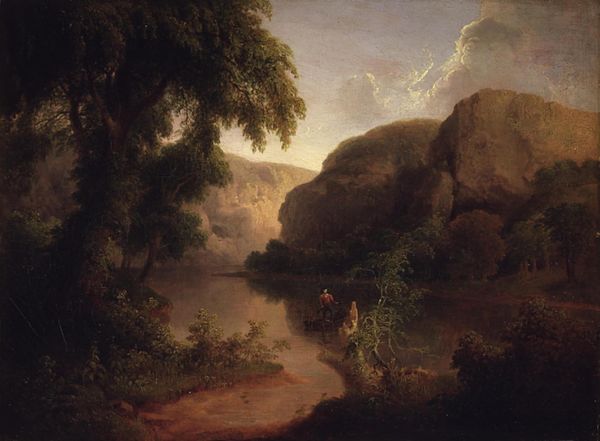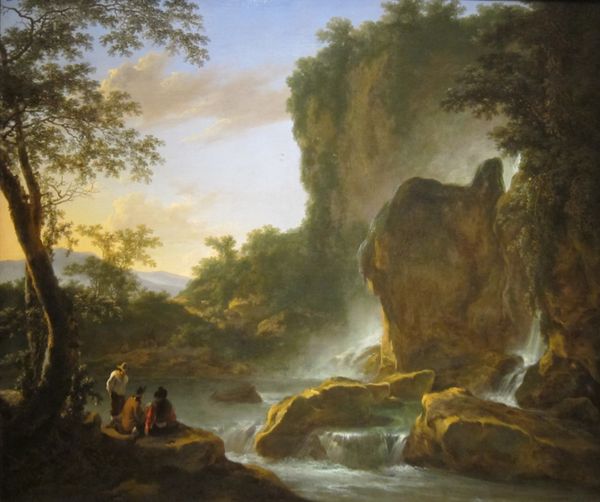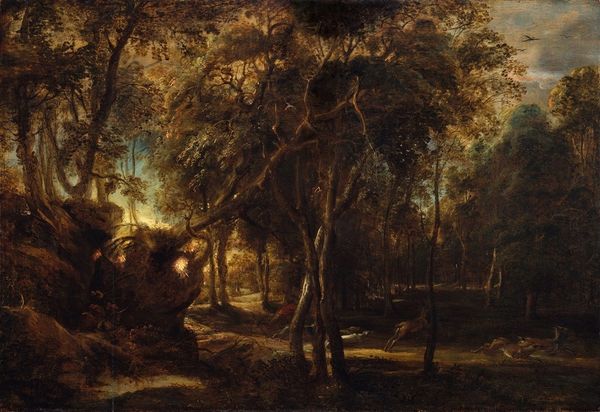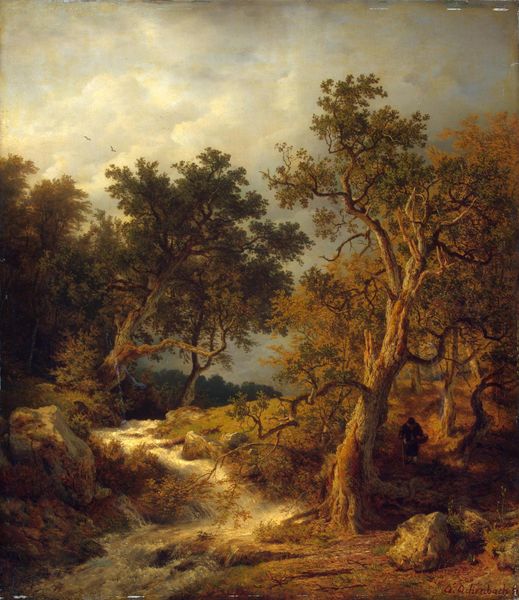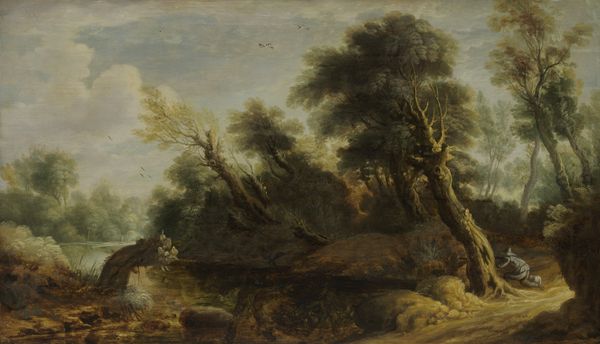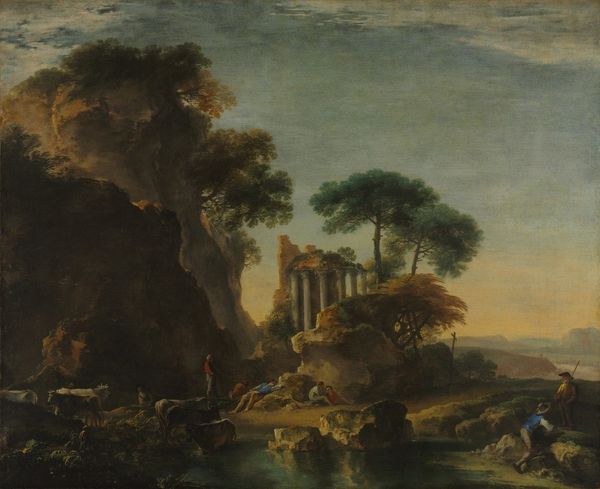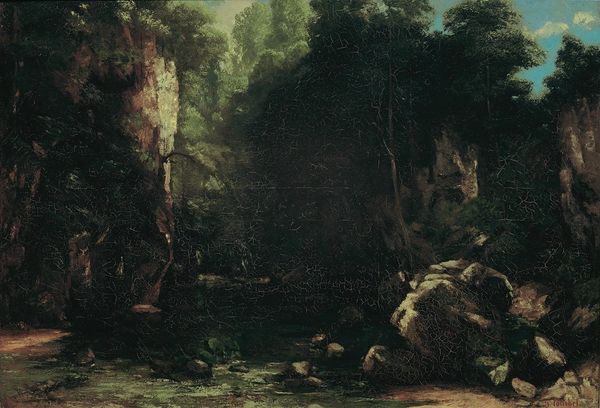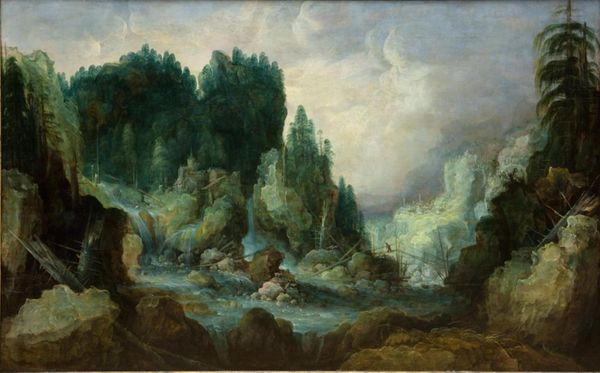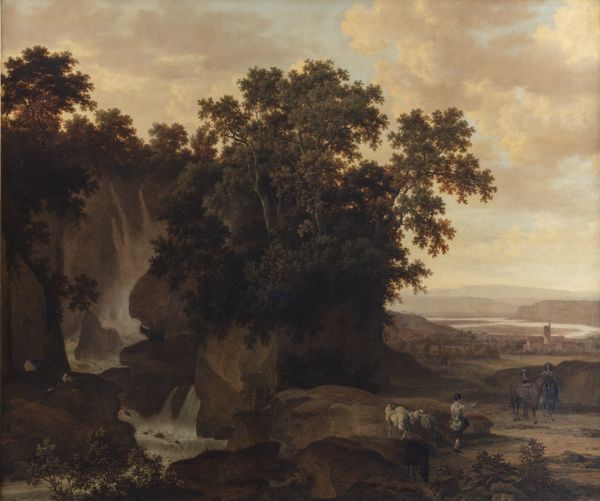
oil-paint
#
oil-paint
#
landscape
#
impressionist landscape
#
figuration
#
form
#
oil painting
#
rock
#
romanticism
#
natural-landscape
#
chiaroscuro
#
genre-painting
#
realism
Dimensions: 64 x 48 cm
Copyright: Public domain
Claude-Joseph Vernet made this oil painting of a cascade sometime in the 18th century. The material reality of this landscape is front and center. Note the density of the stone formations, painted with ochre and brown pigments to emphasize their weight. Vernet’s brushstrokes render the texture of rough surfaces, in contrast to the soft application of paint that describes the foliage and distant sky. And the water? Almost viscous in its accumulation, reflecting the sky. The making of this picture is a performance of skill. Vernet was known for his ability to capture atmospheric effects, and he clearly knew how to manipulate his medium. In the eighteenth century, such artistic skill was a valuable commodity, part of an expanding art market serving elite consumers. Ultimately, the painting asks us to consider the labor involved in making art, and the economic and social systems that support it. It reminds us that even the most seemingly natural scenes are, in fact, carefully constructed products of human effort.
Comments
No comments
Be the first to comment and join the conversation on the ultimate creative platform.
